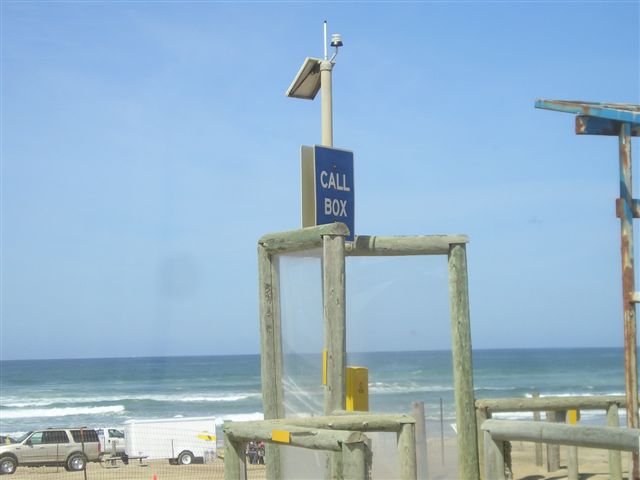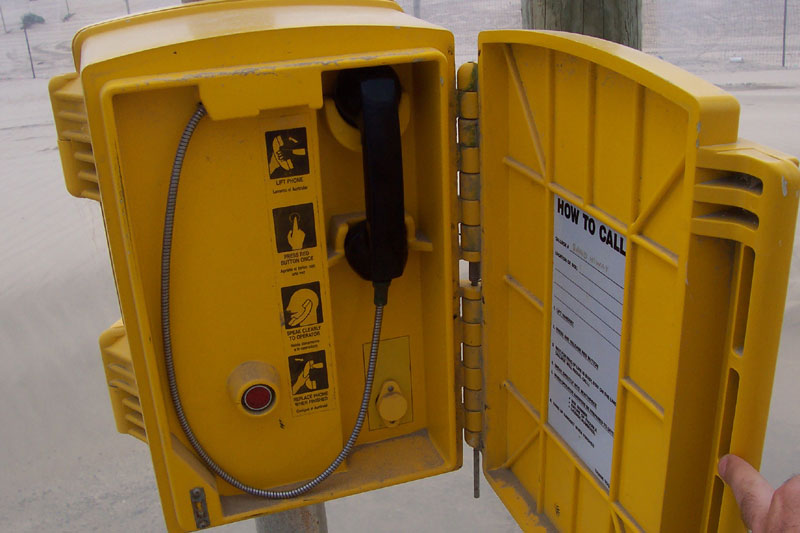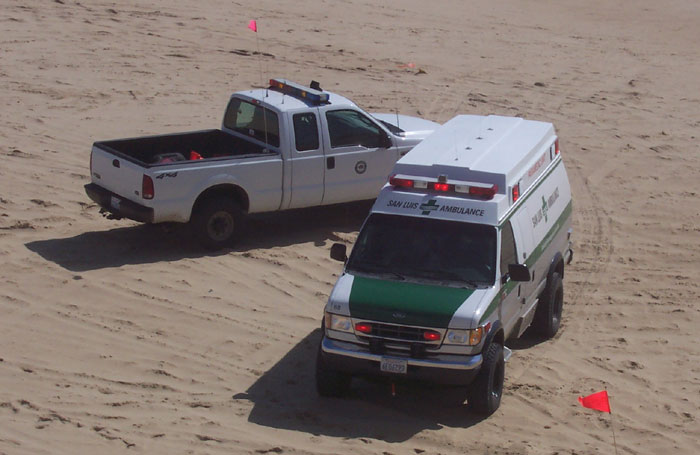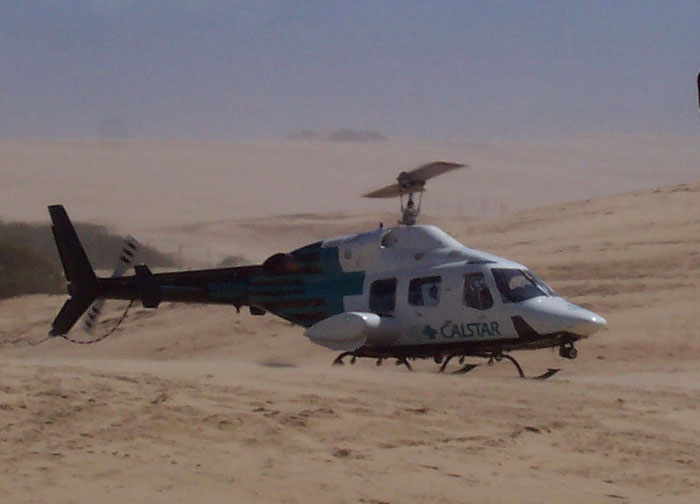| |
 |
|
| |
OCEANO DUNES MOBILE INFORMATION CENTER |
|
| |
|
|
| |
EMERGENCY SITUATIONS
|
|
| |
|
|
|
| |
 |
If the person is not breathing, see below for Rescue Breathing methods. |
|
| |
 |
In case of vehicle accidents or injuries, contact a ranger or attempt to radio ranger base on CB radio, channel 9. |
|
| |
 |
Do not move an injured person unless he or she is in immediate danger. |
|
| |
 |
An emergency solar-powered call-box is located at the entrance to Sand Highway. |
|
| |
|
|
|
| |
|
|
|
| |
WHERE TO GET HELP |
|
| |
|
On major holiday weekends, the ranger staff is supplemented by volunteer groups such as the Sheriff’s Search and Rescue and the Equestrian Mounted Assistance Patrol. All of these people are prepared to offer help and information to visitors. On most holiday weekends a mobile ranger station is located at the Sand Highway entrance. |
|
| |
|
Rescue Breathing |
|
| |
|
A person can stop breathing for many reasons: sudden illness, allergy, a serious accident. When a person is not breathing, but still has a pulse, it is crucial that you perform Rescue Breathing - in effect, breathing for the unconscious person.
When a person stops breathing, there are a crucial few minutes that pass before brain damage and death occur.
In a child, this timeframe is even shorter. In fact, it is recommended that you give an unconscious, not breathing child rescue breaths for a minute before you even call EMS. |
|
| |
|
Rescue Breathing-Adults |
|
| |
|
Rescue breathing is the act of breathing for a person who is not breathing, yet has a pulse. You should never perform rescue breathing on a stranger unless you have a resuscitation mask, so that you will not catch any contagious disease the victim is carrying.
If the victim is not breathing yet has a pulse, initiate rescue breathing. Use a head tilt and a chin lift to keep the victim's airway open. Pinch the victim's nose shut gently, using your thumb and index finger. Then place your mouth over the victim's mouth, making a seal. Breathe slowly, watching to see the chest rise. Pause in between each breath to let the air flow out. If the victim's chest does not rise and fall, retilt the head and try again. If the air still does not go in, the victim has an obstructed airway, and you must perform abdominal thrusts.
After giving 2 breaths, check for a pulse. If the victim has a pulse but still is not breathing, continue rescue breathing. Give 1 breath every 5 seconds. Count the seconds as "one-one thousand, two-one thousand," etc., taking a breath on "four- one thousand" and breathing into the victim on "five-one thousand."
Check for a pulse after about 1 minute of rescue breathing (about 12 breaths). If the victim has a pulse but still is not breathing, continue rescue breathing and checking the pulse every minute. If the victim's pulse stops, begin CPR. |
|
| |
|
Rescue Breathing-Infants and Children |
|
| |
|
To open the airway of an infant or a child, you do not need to tilt the head as far back as an adult's. A very slight tilt should allow air to go in. Give a child or an infant 1 slow breath every 3 seconds. On an infant, you must make a seal over both the infant's mouth and nose. After 1 minute of rescue breathing (about 20 breaths), check for a pulse. If the victim has a pulse but still is not breathing, continue rescue breathing and checking the pulse each minute. If breaths do not go in, retilt and try again. If breaths still do not go in, you must go immediately to abdominal thrusts. If the victim's pulse stops, begin CPR . |
|
| |
|
CPR-Adult |
|
| |
|
If, during the primary survey, you determine that the victim is not breathing, give 2 slow breaths, and then determine that the victim has no pulse, you must begin CPR.
Correct Hand Position: First, kneel next to the victim's chest. Find the notch at the tip of the breastbone where the lower ribs meet the sternum, called the xyphoid process. Remember, if you push directly down on this puppy, you will likely rupture the vicitm's liver and perhaps a few other vital organs, and all the CPR in the world couldn't help him then. Place your middle finger on this notch, and place your index finger down next to your middle finger. That way, you are at least a good two fingers away from the xyphoid danger spot. Next, place the heel of your other hand on the victim's sternum next to your index finger. Place your other hand directly on top and interlace your fingers. Straighten your arms and lock your elbows. Your shoulders should be directly over your hands.Each chest compression should push the sternum down 1 1/2-2 inches.
Count aloud("one and two and three..." etc.) as you do the compressions, maintaining a smooth, steady rhythm. When you give breaths, be sure to open the victim's airway with a head tilt and a chin lift.
Do cycles of 15 chest compressions and 2 slow breaths.
After 4 continuous cycles, check for a pulse. If there is no pulse, continue CPR, beginning with chest compressions and rechecking for a pulse every few minutes. If you do find a pulse, check for breathing. If the victim has a pulse but is not breathing, go to Rescue Breathing. |
|
| |
|
CPR-Child |
|
| |
|
If, during the primary survey, you determine that your child victim is not breathing, give 2 slow breaths, and determine that the victim has no pulse, you must begin CPR.
Correct Hand Position: First, kneel beside the victim's chest. Find the notch where the lower ribs meet the sternum, called the xyphoid process. Remember, don't ever push directly down on it!! If you don't remember why, go over Adult CPR until you never forget. With your middle finger, place your index finger down next to your middle finger, and place the heel of the same hand directly above where you had your index finger. Place your other hand gently on the child's forehead to maintain an open airway. Lock your elbow and push straight down, with your shoulder directly over your hand. Each compression should push the sternum down 1-1 1/2 inches. Count aloud("one and two and three..." etc.) as you do the compressions, maintaining a smooth, steady rhythm. When you give breaths, be sure to open the victim's airway with a head tilt and a chin lift.
Do cycles of 5 chest compressions and 1 slow breath.
After you do CPR for 1 minute(about 12 cycles), check for a pulse. If there is no pulse, continue CPR, beginning with chest compressions and rechecking for a pulse every few minutes. If you find a pulse, check for breathing. If the victim has a pulse but is not breathing, go to Rescue Breathing. |
|
| |
|
When to Stop CPR |
|
| |
|
|
|
-
if another trained person takes over CPR for you
|
-
if more advanced medical personnel take over
|
-
if you are exhausted and unable to continue
|
-
if the scene becomes unsafe
|
-
if the victim's heart starts beating
|
| |
|
|
|
| |
|
SPECIAL THANKS TO ALL |
|
| |
|
|
|
| |
|
WHO HELP OTHERS IN NEED. |
|
| |
|
|
|
| |
|
|
|
| |
|
The content on this site are for on-screen viewing only and may not be
copied, reproduced, manipulated or used in any way, for personal or commercial
use, without, the express written permission of CCWHEELERS.com.
©2010 CCWHEELERS.com |
|




